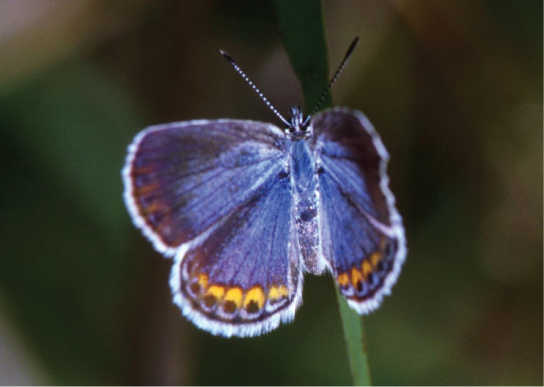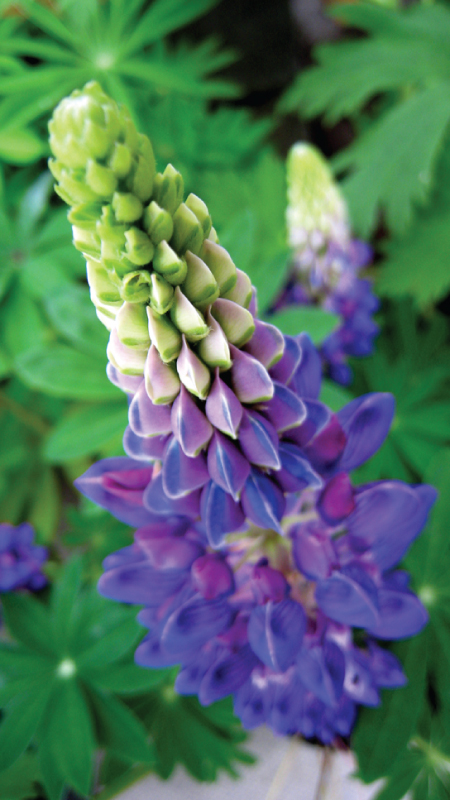| << Chapter < Page | Chapter >> Page > |

After hatching, the larval caterpillars emerge and spend four to six weeks feeding solely on wild lupine ( [link] ). The caterpillars pupate (undergo metamorphosis) and emerge as butterflies after about four weeks. The adult butterflies feed on the nectar of flowers of wild lupine and other plant species. A researcher interested in studying Karner blue butterflies at the organismal level might, in addition to asking questions about egg laying, ask questions about the butterflies’ preferred temperature (a physiological question) or the behavior of the caterpillars when they are at different larval stages (a behavioral question).

A population is a group of interbreeding organisms that are members of the same species living in the same area at the same time. (Organisms that are all members of the same species are called conspecifics .) A population is identified, in part, by where it lives, and its area of population may have natural or artificial boundaries: natural boundaries might be rivers, mountains, or deserts, while examples of artificial boundaries include mowed grass, manmade structures, or roads. The study of population ecology focuses on the number of individuals in an area and how and why population size changes over time. Population ecologists are particularly interested in counting the Karner blue butterfly, for example, because it is classified as federally endangered. However, the distribution and density of this species is highly influenced by the distribution and abundance of wild lupine. Researchers might ask questions about the factors leading to the decline of wild lupine and how these affect Karner blue butterflies. For example, ecologists know that wild lupine thrives in open areas where trees and shrubs are largely absent. In natural settings, intermittent wildfires regularly remove trees and shrubs, helping to maintain the open areas that wild lupine requires. Mathematical models can be used to understand how wildfire suppression by humans has led to the decline of this important plant for the Karner blue butterfly.
A biological community consists of the different species within an area, typically a three-dimensional space, and the interactions within and among these species. Community ecologists are interested in the processes driving these interactions and their consequences. Questions about conspecific interactions often focus on competition among members of the same species for a limited resource. Ecologists also study interactions among various species; members of different species are called heterospecifics . Examples of heterospecific interactions include predation, parasitism, herbivory, competition, and pollination. These interactions can have regulating effects on population sizes and can impact ecological and evolutionary processes affecting diversity.

Notification Switch
Would you like to follow the 'Biology' conversation and receive update notifications?